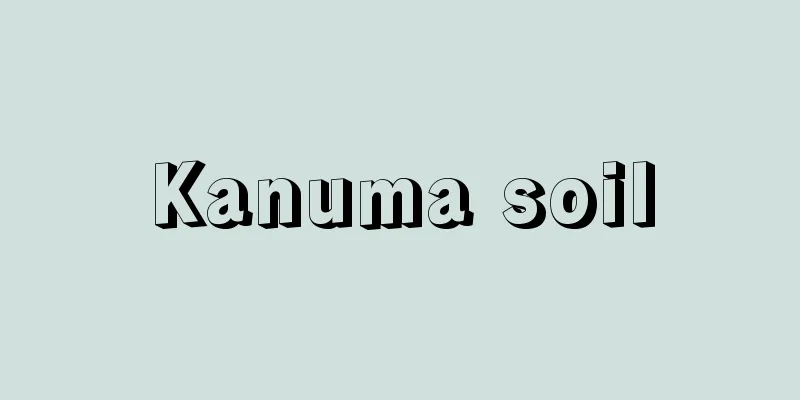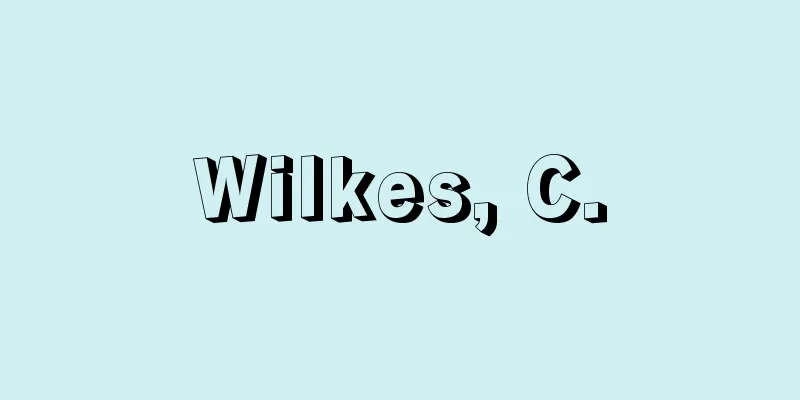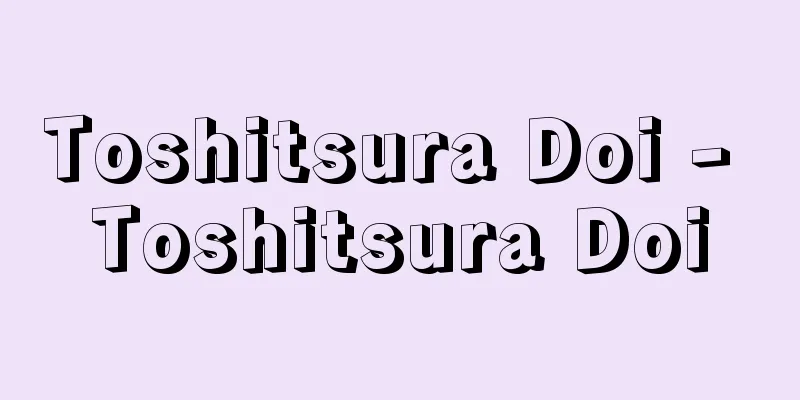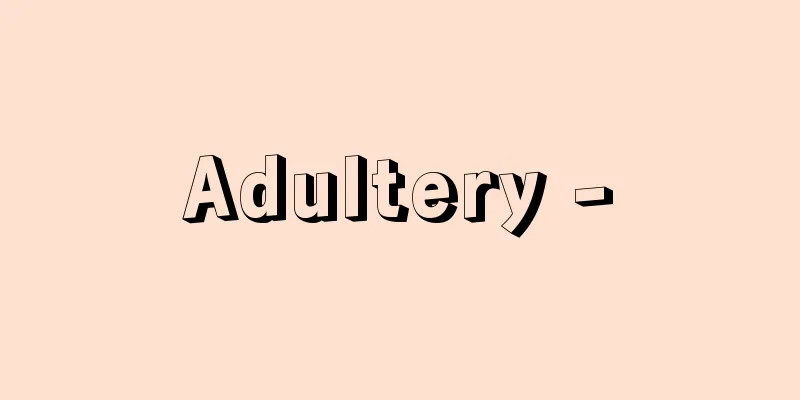Eskimo - Eskimo (English spelling)
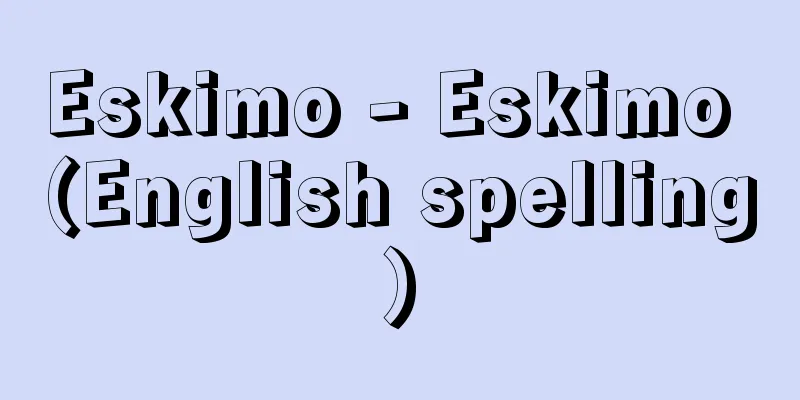
|
A hunter-gatherer people of the far north. Their population of about 90,000 is distributed in the high latitudes from the Chukotka Peninsula in Siberia in the west to Greenland in the east. Most of this distribution is in the tundra north of the tree line, and the distribution of Eskimo prehistoric ruins roughly overlaps with this area. Breaking it down by nationality, there are about 1,200 in Russia, about 34,000 in the United States, about 18,000 in Canada, and about 41,000 in Denmark. Eskimos are relatively homogeneous in character, and have many Asian-Mongoloid characteristics. [Oka Chikuma] nameThe etymological interpretation that "Eskimo" means "those who eat raw meat" has become widely circulated, and in Canada this is considered discriminatory, and the official name is "Inuit," which means "human." However, in recent years, the theory that "Eskimo" comes from a Montagne word meaning "the action of weaving a net to be stretched on snowshoes" has also been accepted as the most likely. Furthermore, "Inuit" is limited to groups distributed from Greenland to Canada and northern Alaska, and other groups use self-names such as "Yup'ik" and "Inupiaq." Furthermore, the indigenous people of Greenland and Alaska do not mind being called "Eskimo," and some people are rather averse to being called "Inuit." According to the Icelandic epic sagas, in 982, an Icelandic farmer named Eric Redbeard fled his homeland for murder, reached Greenland, and colonized the southwestern part of the island. Then, in 1003, Thorfinn Karlsefni encountered a group of native people in Vinland (probably Newfoundland), whom the Vikings called "Skraelings," and recorded four words of their language that may be interpreted as Eskimo. [Oka Chikuma] Origin and brief historyResearch into the origin of Eskimo culture has been conducted in the fields of archaeology, ethnology, and linguistics for a long time, but no consensus has been reached even today. Archaeologically, the following can be roughly stated: The common ancestor of the Eskimo and Aleut people was the bearer of a stone-tool culture of Siberian origin called the Paleo-Arctic tradition for several thousand years after 8000 BC. Around 4000 BC, a change in two directions was observed, and a prehistoric culture called the Northern Archaic tradition was born in Alaska and Canada, which gradually diverged from the culture of the Aleutian Islands. This divergence roughly corresponds to the divergence of the Eskimo and Aleut languages estimated by linguistic chronology. From around 1000 BC, a culture called the Dorset tradition, which was adapted to hunting on the frozen coast, rapidly spread from northern Alaska to Greenland. At the same time, a culture called the Norton tradition, which relied on sea mammal hunting, was born in western Alaska. After the Christian era, the Thule culture, which was associated with whaling, was born in the Bering Strait region and spread east and west. As a result, the Eastern Eskimo language, which will be described later, is thought to have spread widely. [Oka Chikuma] languageThere are at least five distinct, unintelligible Eskimo languages. The differences are mainly in phonetics and vocabulary, with many similarities in the basic grammar. Eastern Eskimo, which is a relatively uniform and continuous group of dialects found in a wide area from northern Alaska to Canada and Greenland, is in opposition to Western Eskimo languages - Alaskan Yukpik, Sukhpiak, Siberian Yukpik, and Sirenic. Sirenic, which was spoken until recently in the westernmost part of the region, is quite unique and may be considered a third group. Nothing is known with certainty about its phylogenetic relationship to other languages, other than that it is related to Aleut. Typologically, it is a polysynthetic language in that a single stem is suffixed with elements that indicate various grammatical categories as well as elements that express concrete concepts, and words can become extremely long, and it is an agglutinative language in that the phonetic expression of these elements shows that it is a polysynthetic language. In addition to the unique differentiation of vocabulary that reflects adaptation to the natural environment (for example, "snow"), it has a complex system of demonstratives in which spatial divisions based on the speaker's position and rivers and seashores are subdivided according to characteristics such as the movement, extent, and distance of objects. Overall, it is still a language with great vitality, but due to the long-standing policy of assimilation, it has been eroded by foreign languages (English, French, Russian, and Danish), and more recently, due to the penetration of television, the pace of erosion has been accelerating. There are already settlements in parts of Alaska and Canada where there are no speakers left among the younger generation. It is unclear to what extent the recently launched bilingual education program can stop this erosion. In parts of Canada, a unique syllabary originally invented for the Ojibwe Indians is in use. In Asia, Cyrillic script is used, while elsewhere, the Latin script is used, although the orthography of the latter varies from region to region. [Hiroshi Miyaoka] Occupation and SocietyEskimos are broadly divided into three ecological types: (1) a group that mainly hunts sea animals such as seals, whales, and walruses on the coast; (2) a group that hunts caribou and salmon inland; and (3) a group that hunts both inland and on the coast. Although some of the group (1) are semi-settled, they generally live a highly mobile life. Since they are forced to move in response to the seasonal migration of game animals, they have no choice but to limit their living materials to the bare minimum. However, their technological culture is uniquely developed among "primitive societies," and hunting equipment is specialized according to its purpose. In contrast, society is not highly organized, except in areas such as southern Alaska, which are thought to have been influenced by American Indians. The division of labor is mainly based on gender, with men supporting their wives, children, and relatives who are unable to work by hunting, and women sharing the sewing and cooking duties. There is no hierarchical differentiation except in some areas, and only those with good judgment become political leaders. The daily life of the people is based on bands, which are groups of several nuclear families. The number of these families increases and decreases according to seasonal migration. Each Eskimo band is called by the name of the place, followed by the suffix "-miut", which means "people who live in...". In Alaska, they are often made up of a chain of in-law relationships (father-in-law-son-in-law, brother-in-law) called nigau. After marriage, it is common to adopt a matrilineal residence system. Children belong equally to both the paternal and maternal sides (bilateral descent), and do not form monolineal blood-relationship groups such as clans and lineages. Eskimo society has traditionally been considered a "primitive communist society", and the main reason for this is that the game is not the exclusive property of the hunter who caught it. The game is distributed according to its size. If it is large, it is distributed to the whole band, and if it is small, it is not distributed. Most of the living goods are privately owned, and there is a practice of marking the ownership to indicate the owner. A family's private goods are limited, about the size of one sled. Special curse words are also considered private property, and in some cases can be exchanged for other goods. There is no institution that can impose legal punishment on criminals. Punishment for murderers is left to the revenge of the victim's relatives. Due to the harsh ecological conditions that the Eskimos live in, there is an implicit upper limit to the size of a group. In the past, some groups had the practice of artificially controlling the population by infanticide when the acceptable limit was exceeded. The infanticide targeted newborn girls, resulting in an imbalance in the ratio of men to women at the marriageable age, which in some cases gave rise to the unusual form of marriage known as polyandry. Most everyday social relationships are formed within the band, but sometimes relationships go beyond the band. In northern Alaska, coastal bands and inland bands have institutionalized trade relationships, and they complement each other's shortcomings. Some also have partners in other bands based on friendship. [Oka Chikuma] WorldviewEskimos recognized the existence of an essence called inua not only in humans and animals, but also in inanimate objects such as minerals, and in actions such as sleeping and eating. For example, in Igloolik, the inua of a human is represented as a miniature human, and the inua of a caribou is represented as a miniature caribou, and they believed that this gives the object its appearance, thoughts, power, and life. In addition to their inua, humans also have names, which give them wisdom and skills. In this way, Eskimos recognized an essence other than the physical body in animals, so the act of hunting took on a completely different meaning from today's sport hunting. When hunting, Eskimos are connected to the inua of the animal, and delicate care is required not to harm it. This is also the reason for the existence of various hunting rituals and an elaborate taboo system. Eskimos in the Bering Sea region hold a bladder festival in the fall. At this time, the bladder of a bearded seal killed during the season is lowered into the sea through a hole in the ice, and the shaman prays for a good hunt in the coming year. The Chugach Eskimos would leave the head of a hunted bear facing inland, with the hope that the animal's inua would return to its proper place and that it would return later, full of meat. Hunters must also observe strict taboos before and after hunting. In particular, contact with menstruating women is taboo. The Inuit of central and eastern Canada believe that breaking taboos will anger a woman (Sedna) who lives at the bottom of the sea, and as a result, prey will disappear from the land. Sedna is considered the lord of sea animals, especially by coastal Eskimos, and there is a widely distributed myth that sea animals such as seals and whales are formed from the joints of her severed fingers. Sedna is the object of greatest fear and respect for Eskimos. Misfortunes such as poor hunting, bad weather, and illness are believed to be phenomena sent by supernatural beings such as Sedna, and the central figure who deals with them is a shaman called Angakok. Angakok is a human being with an inner light, and it is believed that he has the ability to see things that ordinary people cannot see, see the past and future, and go to places that ordinary people cannot approach. When hunting is poor, they perform shamanistic rituals and descend to the bottom of the sea to appease Sedna and restore abundant hunting to the surface. Or they make people confess their violation of taboos and heal their illnesses. [Oka Chikuma] "Eskimo: A Cultural History of the Far North" by Hakuto Miyaoka (1987, Iwanami Shinsho) "Canada = Eskimo" by Katsuichi Honda (1981, Asahi Shimbun, Asahi Bunko) Source: Shogakukan Encyclopedia Nipponica About Encyclopedia Nipponica Information | Legend |
|
極北の狩猟民。約9万人の人口が、西はシベリアのチュコト半島から東はグリーンランドにかけての、高緯度地帯に分布している。この分布帯はほとんどが森林限界以北のツンドラで、エスキモーの先史遺跡の分布もほぼこれと重なる。国籍別にその内訳をみると、ロシア領に約1200人、アメリカ領に約3万4000人、カナダ領に約1万8000人、デンマーク領に約4万1000人である。エスキモーは形質的には比較的均質で、アジア・モンゴロイドの特徴を多く備えている。 [岡 千曲] 名称「エスキモー」には「生肉(なまにく)を食べる人」という意味があるとする語源的解釈が広く流布するようになり、カナダではこれを差別語として、「人間」を意味する自称「イヌイット」を公称としている。だが最近では「エスキモー」は「かんじきに張る網を編む動作」を意味するモンターニュ語に由来するとの説も有力なものとして認められてきた。また「イヌイット」はグリーンランドからカナダ、北アラスカにかけて分布する集団に限られており、他の集団では「ユッピック」「イヌピアック」などの自称を用いている。さらにグリーンランドやアラスカの先住民は「エスキモー」とよばれることをいとわず、一部ではむしろ「イヌイット」とよばれることをいやがる向きもある。 アイスランドの叙事詩サガによれば、982年、アイスランドの農夫「赤ヒゲのエリック」は殺人のかどで故地を脱してグリーンランドに達し、この島の南西部に植民した。ついで1003年、トールフィン・カールセフニThorfin Karlsefniはビンランド(ニューファンドランド地方と思われる)でバイキングが「スクレーリング」とよんでいた先住民に出会い、彼らの単語を4語記しているが、これがエスキモー語と解釈できる可能性もあるという。 [岡 千曲] 起源・略史エスキモー文化の起源は、考古学、民族学、言語学などの分野で早くから研究が進められてきたが、現在でも定説をみるに至っていない。考古学的には、概略して以下のことがいえるようである。エスキモーとアリュート(アレウト)人の共通祖先は紀元前8000年以降の数千年の間、パレオ極北伝統とよばれるシベリア起源の石器文化の担い手であった。前4000年ごろになって二つの方向の変化がみられ、アラスカとカナダでは北方アルカイック伝統とよばれる先史文化が生まれて、アリューシャン列島の文化としだいに分岐する。この分岐は言語年代学の推定するエスキモー語とアリュート(アレウト)語の分岐にほぼ対応している。前1000年ごろからドーセット伝統とよばれる氷結した海岸での狩猟に適応した文化が、アラスカ北部からグリーンランドまで急速に展開した。同じころアラスカ西方ではノートン伝統とよばれる海獣狩猟に依存した文化が生まれた。紀元後ベーリング海峡地域にクジラ猟を伴うテューレ伝統の文化が生まれ東西に展開した。これに伴って、後述する東エスキモー語が広域に分布したものと考えられている。 [岡 千曲] 言語エスキモー語には、たがいに通じない少なくとも五つの(方言というよりは別個の)言語が認められる。差異はおもに音声と語彙(ごい)に生じ、文法の基本には類似性が多くみられる。北アラスカからカナダとグリーンランドにいたる広域には、比較的斉一(せいいつ)かつ連続的な方言群からなる東エスキモー語があり、西エスキモー語群――アラスカ・ユッピック語、スフピアック語、シベリア・ユッピック語、およびシレニック語――と対立する。ただ、語域の最西端に近年まで話されていたシレニック語は、著しい特異性をもち、第三のグループとして独立させることも可能である。他言語との系統関係については、アリュート(アレウト)語と同系であるという以外、なんら確実なことは判っていない。 類型的にみると、一つの語幹に、さまざまな文法範疇(はんちゅう)を示す要素のほか、具体的な概念を表す要素が数多く接尾され、語がきわめて長くなりうる点からいえば複統合的、それら要素の音声的現れ方からすると膠着(こうちゃく)的言語である。自然環境(たとえば「雪」)への適応を反映した特異な語彙の分化がみられるほか、語者の位置および川や海辺を基準にした空間区分が、対象物の動き・広がり・遠近といった特徴によって細分化した複雑な指示詞の体系をもつ。 全体としては、今も大きな活力をもつ言語であるとはいえ、長年の同化政策のために、外来の言語(英、仏、露、デンマーク語)に蚕食され、さらに最近はテレビの浸透のために、その速度が増大してきている。すでに若年層に話し手がいなくなった居住地もアラスカやカナダの一部にはある。近年始まった二重言語教育も、この蚕食をどの程度くいとめうるものか、楽観を許さない。 カナダの一部では、もとオジブワ・インディアンのために考案された独特の音節文字が普及している。アジアはキリル文字、その他はラテン文字が用いられているが、ラテン文字の場合、地域によって正書法はまちまちである。 [宮岡伯人] 生業・社会エスキモーは大別して三つの生態型に分けられる。(1)海岸でアザラシ、クジラ、セイウチなどの海獣を主として狩猟するグループ、(2)内陸でカリブー狩猟やサケ漁を行うグループ、(3)内陸―海岸の狩猟の双方を行うグループである。(1)のタイプには半定着的なグループもあるが、移動性の高い生活が一般的である。猟獣の季節的移動に応じて集団も移動を余儀なくされるため、生活財は必要最小限にとどめざるをえない。だがその技術文化は「未開社会」のなかでは特異に発達しており、猟具なども用途に応じて特殊化している。これに対して社会は、南アラスカのようなアメリカ・インディアンの影響を受けたと思われる地域を除けば、高度に組織化されることはない。分業はおもに性の原理に基づき、男が狩猟によって妻子や労働能力のない親族を養い、女は縫い物や料理を分担する。階層的分化も一部の地域を除いてはみられず、判断力に優れた者が政治的リーダーとなる程度である。人々の日常生活は、複数の核家族の集団であるバンドを単位としている。この構成家族は季節的移動に応じて増減する。また、エスキモーのそれぞれのバンドは、地名のあとに「……に住む人々」を表す接尾辞「―ミウト」をつけてよばれる。アラスカでは、ニガウとよばれる姻族関係(義父―娘婿、義兄弟)の連鎖で構成されることが多い。婚姻後は妻方居住方式を採用するのが一般的である。子供は父方、母方の双方に等しく帰属(双系出自)し、クランやリネージのような単系血縁集団は形成しない。エスキモー社会は従来「原始共産制社会」とされてきたが、その最大の理由は、獲物が、しとめたハンターの排他的所有にならない点にある。獲物はその大きさによって分配される。大型の場合はバンド全体に分配され、小型の動物は分配されない。生活財のほとんどは私有され、所有者を標示する占有標をつける慣行もある。家族の私有財は限られており、そり1台に乗せられるほどのものである。特殊な呪語(じゅご)も私有財とされ、他の財との交換の対象となっている例もある。犯罪者に対する法的制裁を行う機関は存在しない。殺害者に対する制裁は犠牲者の近親者の復讐(ふくしゅう)にゆだねられる。 エスキモーをめぐる生態的状況は過酷であるため、集団の規模の上限といったものが暗黙裏に設けられている。かつて一部のグループでは許容の上限を超えた場合には、人為的に嬰児(えいじ)殺しでコントロールされる慣行があった。対象となるのは生後まもない女児で、結果として適齢期の男女比のアンバランスという事態を招き、これが一部に一妻多夫という特異な婚姻形態を生むことにもなった。日常的な社会関係はほとんどバンド内で結ばれるが、ときにバンドを超える関係も設定される。北アラスカでは海岸のバンドと内陸のバンドが制度化された交易関係をもち、互いに、ないものを補い合っている。また他のバンドに友情関係に基づくパートナーをもっている者もある。 [岡 千曲] 世界観エスキモーは、人間や動物だけでなく鉱物のような無生物、あるいは睡眠や食事といった行為にも、イヌアとよばれる本質の存在を認めていた。たとえばイグルーリックでは、人間のイヌアは人間のミニアチュア、カリブーのイヌアはカリブーのミニアチュアとして表象されており、これが当のものにその外観、思考、力、生命を付与していると考えていた。人間はイヌアのほかにも名前をもち、これによって知恵や技術を授けられている。このように動物にも肉体以外の本質を認めることから、狩猟という行為も今日のスポーツハンティングとはまったく異なる意味を帯びてくる。エスキモーは狩猟において動物のイヌアと関係することになり、これを傷つけないようデリケートな配慮が要求されるのである。さまざまな狩猟儀礼や入念なタブー・システムの存在理由もそこにある。ベーリング海地方のエスキモーは秋に膀胱(ぼうこう)祭を行う。このときはそのシーズンに殺したヒゲアザラシの膀胱を氷の穴から海に沈め、シャーマンがきたるべき豊猟を祈る。チュガチ・エスキモーでは狩ったクマの頭部はその場で内陸のほうに向けて残しておく。これらはいずれも、動物のイヌアをしかるべく本来の所へ戻してやり、将来、肉をつけて再来することを期待した行為である。 また狩人(かりゅうど)は狩りの前後はとくに厳格なタブーを遵守しなくてはならない。とりわけ月経中の女性との接触が忌まれる。カナダ中東部のイヌイットではタブーを犯すと、海の底に住んでいる女(セドナ)の怒りを招き、結果として地上から獲物がいなくなると信じられていた。セドナは、とくに海岸部のエスキモーでは海の動物たちの主とされており、アザラシやクジラなどの海獣は彼女の指の切断された各関節から化成したという神話が広く分布している。セドナは、エスキモーがもっとも畏(おそ)れ、敬意を払わねばならぬ対象となっている。不猟、悪天候、病気といった災厄はセドナをはじめとする超自然的存在者が差し向ける現象とされており、これに対処する中心的存在がアンガコクとよばれるシャーマンである。アンガコクは内なる光を宿した人間で、常人に見えないものを視(み)、過去・未来を見通し、常人に近づけない所へ行く能力をもっていると信じられていた。不猟のときには巫儀(ふぎ)を行って海底へ下降し、セドナの機嫌を取り結んで地上に豊猟を回復する。あるいはタブー侵犯を告白させて人々の病気を治したりもする。 [岡 千曲] 『宮岡伯人著『エスキモー 極北の文化誌』(1987・岩波新書)』▽『本多勝一著『カナダ=エスキモー』(1981・朝日新聞社・朝日文庫)』 出典 小学館 日本大百科全書(ニッポニカ)日本大百科全書(ニッポニカ)について 情報 | 凡例 |
>>: Eschinanthus - Eschinanthus
Recommend
Sui and Tang Art (English)
After the fall of the Han dynasty, which was the c...
Uri (state)
The fourth canton (state) of the Swiss Confederati...
Horizontal wave - Yokonami
A wave in which the displacement of the medium is...
Komae [city] - Komae
A city on the north bank of the Tama River in sout...
Katsutadai
…After the Great Kanto Earthquake, dairy companie...
Housing finance - housing finance
This refers to the lending of funds required for t...
Atssaisen - Atssaisen
…During this time, firecrackers are set off and h...
Federalist Party
…the Federalist Party was a political party in th...
ASP Report - ASP Report
... The Three Mile Island accident was a major tu...
sound spectrograph
... Voice and speech are acoustic changes over ti...
Kitamata River
…It is about 30 km long. The upper reaches are di...
Ewell
…a city in the southeast of England, Surrey. It m...
Ikema
〘Noun〙 (ikema) A perennial climbing plant of the A...
Arsenic (arsenic)
Periodic table element symbol = As Atomic number =...
Flock of Crows
…His first important theatrical work was the soci...


